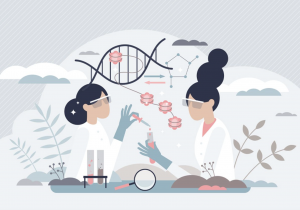Imagine you wake up one day with no vision at all, the surroundings of you dark and shadowy. That is everyday life for millions of people worldwide. There are 295 million people with a serious loss of sight and some 43 million blind people. Glasses, contacts, and surgery assist many, but there have not been so many practical solutions for those who have serious loss of vision.
The “bionic eye” is a reality today due to advances in ophthalmology and bioengineering. People are being restored to sight using devices like retinal microchips and AI-powered spectacles. It is occurring today and is likely the closest turning blind individuals into miracles.
A chip implanted in the eye that is no bigger than a grain of rice is called a bionic eye. It communicates with the brain instantly after taking pictures from a camera mounted on glasses. Blind patients are now able to perceive shapes, movement, and even enormous letters thanks to the Argus II technology, or the “bionic eye.” It does not give them normal sight. But, it restores people’s independence, allowing them to view loved ones’ for the first time in several years, detect entrances, and walk on sidewalks.
Moreover, retinal implants are only the beginning. Researchers are developing AI glasses that can inform blind people what’s going on around them, smart contact lenses that can change focus or deliver medication, and even brain-computer interfaces that don’t include the eye at all. These innovations are creating new possibilities by mashing together technology and biology in ways that feel almost sci-fi.
The effect on individuals is incredible. After years of blindness, one patient said he detected “flashes of light” that traced his wife’s face. Though their vision wasn’t perfect, it was enough to bring them both to tears. One’s life is changed dramatically by even partial vision.
Bionic eyes aren’t perfect yet. They may be difficult to obtain, have terrible efficiency, and be expensive. But technology is evolving quickly. Just like cell phones evolved from clunky bricks to sophisticated smartphones. Anything revolutionary now could be completely normal in a couple of decades.
Super human sight, in the forms of X-ray eyes, laser beams, and night vision goggles, has long been humanity’s fantasy. Even though we are not there yet, ophthalmology is offering human beings an opportunity to see once more. It is the greatest superpower of all for the millions of human beings who dwell in darkness.






Comments are closed.